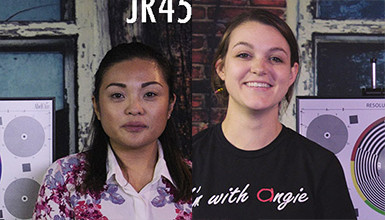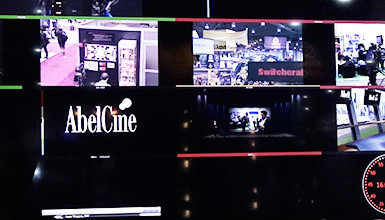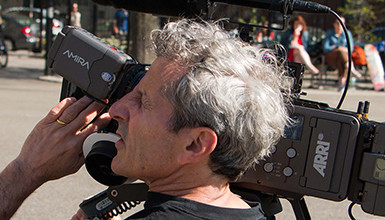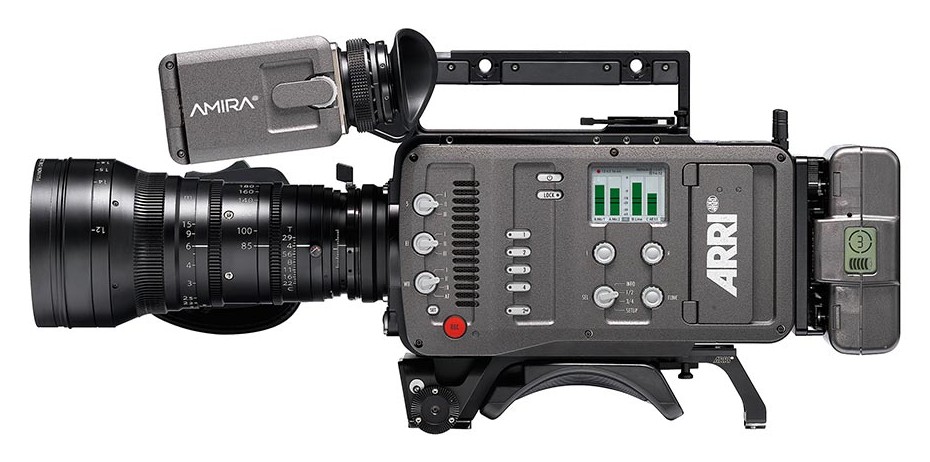
Since the AMIRA's sensor is the same as that of the ALEXA, you'll get 14 stops of dynamic range, fantastic skin-tone rendition, a native ISO of 800, and EI range from 160 to 3200.
Recording in ProRes formats up to 4:4:4 in HD and 2K modes with frame rates up to 200fps, the AMIRA also includes all the standard frame rates of the ALEXA, in addition to some interlaced frame rates (59.94i and 50i), which are required by many broadcasters. All recording is done to CFast 2.0 cards, which are very fast and offer a very low price per gigabyte ratio. You can learn more about CFast 2.0 cards at Sandisk's site.
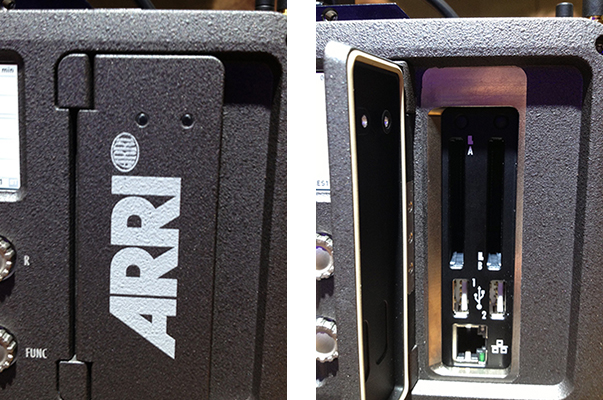
Open and closed views of the CFast 2.0 card slots on the Arri AMIRA
The AMIRA will record in either Rec709 or Log-C modes and will also support 3D LUTs. Many of the 3D LUTS will be preloaded by Arri to create various scene files (looks) in the camera; additional ones can be created by a color grading program and then loaded into the camera. These settings can also be adjusted live while recording.
The camera's focus on ENG, single-operator work can be seen throughout the camera's design. It features a new 1280 x 1024 resolution OLED EVF and a flip-out 3.2" LCD display. The LCD is designed to work in high brightness conditions and is dual-purposed as the menu display. This EVF & LCD combination gives operators a lot of ways to work with the camera; options like focus peaking, zebras, false color modes, and a tally light will make them feel right at home.
![photo[6]_500](/uploaded/articlemodel/ph/photo6_500-e1379092039565.jpg)
The Arri AMIRA's EVF with the LCD flipped out, notice the menu display.
The menu system of the camera mirrors the simplicity and ease of use found in the ALEXA; for ENG operation, a number of assignable buttons and dials cover the camera. White balance, EI, and scene files selection can all be easily adjusted from the outside of the camera with dials on the operator's side. Also, the camera features an internal motorized ND filter wheel with 0.6, 1.2, and 2.1 ND filters.
Audio is a big part of ENG operation and the AMIRA delivers. The camera records four channels of 24-bit 48Hz audio and features two XLR 3-pin outputs with mic, line, phantom power, and AES3 support. There is also one XLR 5-pin input with stereo/mono mic inputs, line inputs, and phantom power options. The camera can be fitted with an ENG-style attachable microphone and has a side panel dedicated to audio levels. Levels can be set from the side of the camera or set directly to Auto Level.
The camera is sealed against humidity and dust, and with the Arri name, you know it will be durable. It can be easily balanced on the shoulder with a specialized dovetail system on the top and bottom of the camera, and it is designed to snap into a quick-release tripod adapter plate (such as the VCT-14 from Sony). The back of the camera has an Anton Bauer gold mount on it with P-taps for power output, plus you'll find 12V Hirose 4-pin connectors to power wireless audio and other accessories, as well as an Arri RS connector. No word yet on the power draw of the camera, but it promises to be lower than the ALEXA.
The PL mount on the camera features a 12-pin connection for operation with the Fujinon Cabrio lenses. This allows for auto-iris control and for the lens to start/stop recording on the camera. Arri is also planning to offer a PL mount with LDS connectivity, a B4 mount with electronic interface for using 2/3" ENG lenses, and an F mount for using EF mounted lenses.
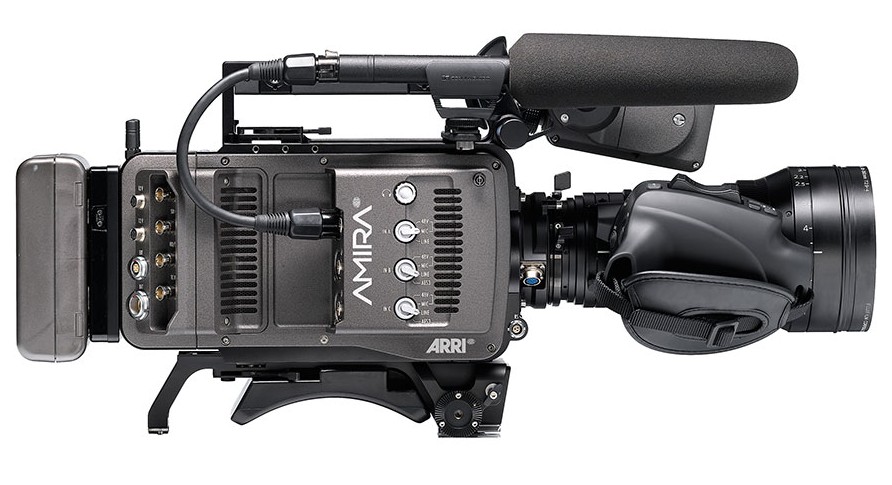
Additional features of the camera include Wi-Fi remote control capabilities, surround-view look around in the EVF and outputs, continuous white balance modes, and extremely quiet operation noise (-20 db). We are very excited to see this camera - look for it to ship sometime in Q2 2014. Pricing has yet to be announced, although Arri is stating that it should be well below that of the ALEXA Classic. For more, read Arri's full press release or visit their official AMIRA page.













